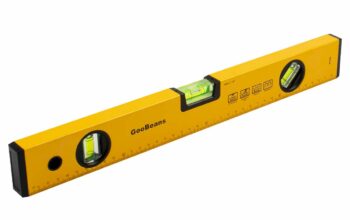Quantum computing represents a confluence of groundbreaking scientific advances and time-honored architectural principles, creating a unique synergy that promises to revolutionize computation. At its core, the design and functionality of quantum computers draw upon established concepts rooted in classical architecture, transcending traditional paradigms. This article explores how quantum computers inherit and recontextualize classic architectural elements, paving the way for unprecedented computational capabilities.
1. The Foundations of Computation: Classical vs. Quantum
To appreciate the architectural lineage of quantum computers, one must first grasp the distinctions between classical and quantum computation. Classical computers operate on bits, binary units that embody either a 0 or a 1. In contrast, quantum computers harness quantum bits or qubits, which can exist in multiple states simultaneously, thanks to the principles of superposition and entanglement. This fundamental divergence allows quantum systems to outperform their classical counterparts significantly in certain computational tasks.
Yet, amid this profound transformation lies an echo of classical computing’s architectural philosophies, begging the question: how does an advanced quantum system incorporate the frameworks that have defined classical computing?
2. Modular Approaches and Scalability
One crucial architectural concept drawn from classical systems is modularity. Classical computers, particularly in their hardware designs, employ modular components that can be independently developed and upgraded. This abstraction enables easier scalability and maintenance. Quantum computing is embracing a similar modular philosophy in constructing its systems.
Just as classical circuits can be reconfigured and expanded, quantum computers leverage module-based designs to facilitate the integration of various qubits and quantum gates. The pursuit of scalable quantum architectures—ranging from superconducting qubits to topological qubits—mirrors classical strategies, fostering an environment ripe for innovation. As quantum technology matures, the emphasis on modular design principles can expedite the transition to large-scale, resilient quantum processors.
3. Error Correction and Fault Tolerance
Another hallmark of classical architecture that has been critically examined in the quantum domain is the concept of error correction. Classical systems employ robust error-correcting codes to ensure reliability and resilience against noise, a principle that becomes even more poignant in quantum systems where decoherence presents formidable challenges.
Nevertheless, just as classical computers have developed sophisticated algorithms to correct errors, quantum computers are actively exploring quantum error correction schemes that capitalize on entanglement and superposition. This transformation of classical coding concepts into quantum frameworks epitomizes the integrative approach that precedes groundbreaking advancements. By mapping classical coding theories onto quantum architectures, researchers can nurture an environment where errors are mitigated, and computations become more reliable.
4. The Role of Circuit Design
Circuit design is a quintessential element that has traversed from classical infrastructures into quantum realms. Quantum circuit design involves orchestrating a sequence of quantum gates, akin to logic gates in classical circuits, to perform operations on qubits. The application of established designs—such as the reversible logic circuits—extends beyond mere replication; it represents a reinvention tailored for quantum operations.
This adaptation suggests that visual and architectural notions familiar in classical electronics—layout optimization, gate placement, and interconnect wiring—are being revisited and innovated within the quantum framework. Moreover, as quantum algorithms evolve, the interactive relationship between circuit complexity and computational efficiency becomes increasingly salient, creating layers of relevance that echo classical design origins while paving pathways for novel computational methodologies.
5. Architecture and Interconnectivity
The interconnectedness of components within a quantum computer mirrors classical architecture’s approach to connectivity. Classical systems often rely on intricate networking protocols and data busses to facilitate communication among components. Similarly, the coherence among qubits is paramount for quantum computation to flourish. The design of effective quantum networks aims to minimize errors in data transmission while maximizing qubit interaction.
Innovations in qubit-to-qubit interaction, as seen in architectures employing beam-splitters and photonic links, showcase a reimagined perspective on interconnectivity. Interfaces abstract feature sets reminiscent of classical designs, reinforcing how fundamental principles of connectivity persist within the quantum milieu and influence operational efficacy.
6. Programming Paradigms and Algorithmic Foundations
The programming paradigms that inform quantum computing are also reflective of classical approaches, albeit with a twist. Classical algorithms—designed to function within deterministic landscapes—are being reinterpreted. Quantum algorithms often combine classical logic with quantum entanglements to achieve results unattainable through classical computation alone. Shor’s algorithm and Grover’s search are prime examples where classical thinking is leveraged to enhance quantum processing.
This iterative design process illuminates an enticing aspect of the field: as quantum programming evolves, elements of historical algorithmic frameworks are reexamined to fit novel capabilities offered by quantum hardware. The infusion of classical ideas within quantum paradigms reinforces the notion that even the most advanced technologies can find value in their conceptual predecessors.
7. The Future: A Symbiosis of Ideas
The continued evolution of quantum computing signifies not simply the emergence of a new technological paradigm but also a testament to the enduring relevance of classical ideas and architectural wisdom. As researchers strive to create quantum systems that can tackle previously insurmountable challenges, they are simultaneously repackaging classical concepts in innovative ways, underscoring the fluidity of knowledge transfer across epochs.
Ultimately, the seamless interweaving of classical architecture with quantum innovation poses an intriguing perspective shift. It invites scholars and technologists to appreciate the richness of historical context while propelling forward to new horizons. The future of quantum computing may very well rest on the ability to harmoniously engage with, and adapt from, the conceptual scaffolding that classical architectures provide, leading to a promising vista of computational potential and discovery.












